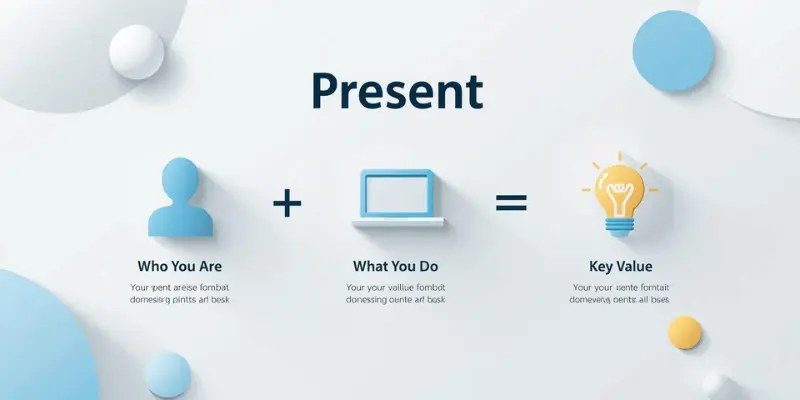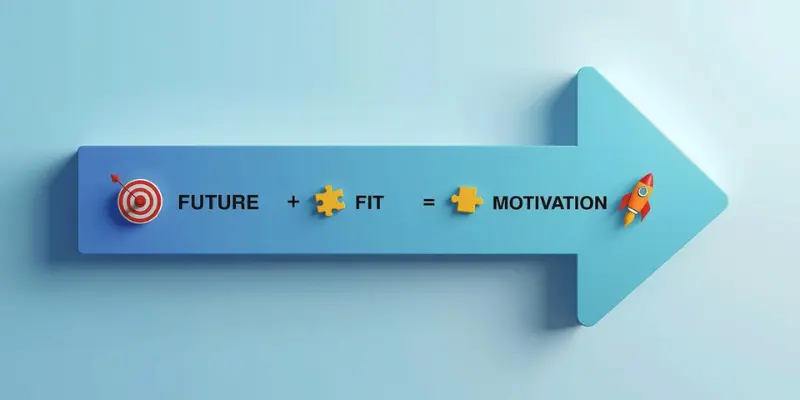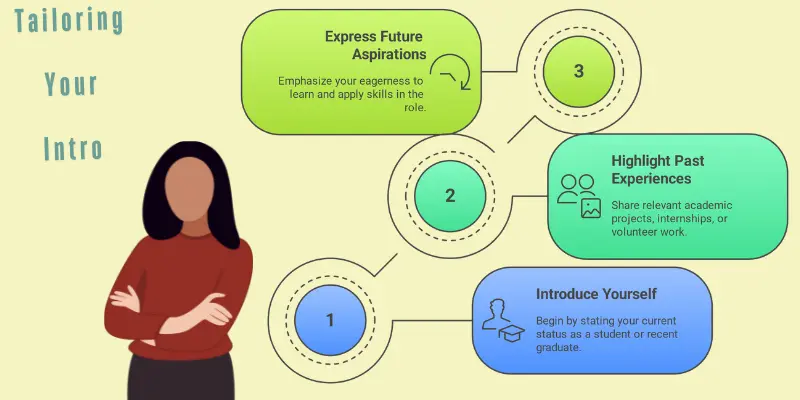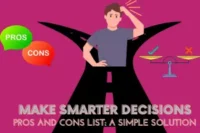How to Introduce Yourself: The ‘Present-Past-Future’ Framework for a Winning Interview
Published: 30/08/2025
If there’s one interview question that makes almost everyone uneasy, it’s this: “Tell me about yourself.”
Your mind goes blank. Do they want your entire career story? Should you start with your education? Or maybe share something personal to stand out? The truth is, most candidates either ramble, overshare, or freeze up—and it costs them the chance to make a strong first impression.
Here’s the good news: you don’t need to struggle with this anymore. Over the years, hiring managers have shared that the best introductions are simple, structured, and confident. That’s where the Present-Past-Future framework comes in. It’s a straightforward formula that gives you a clear roadmap to introduce yourself without the stress or second-guessing.
In this article, I’ll walk you through exactly how to use this framework. You’ll learn:
- How to introduce yourself in a way that instantly positions you as the right fit.
- A step-by-step breakdown of what to say about your present, your past, and your future.
- Practical tips for both new graduates and seasoned professionals.
- Common mistakes to avoid—and what to do instead.
By the end, you’ll not only have a proven formula but also the confidence to deliver it naturally. Think of this as your go-to script for the very first question that sets the tone for the entire interview.
The Core Framework: Mastering the ‘Present-Past-Future’
Before diving into the details, it’s important to understand that this framework works like a simple story arc. You begin with the “Present” to anchor who you are today, then connect it to the “Past” to show what shaped you, and finally move into the “Future” to highlight where you’re headed. Let’s start with the Present.
The Present (Who You Are & What You Do)
When you start your introduction, the goal is to make the interviewer immediately understand who you are right now and why you’re valuable. Think of this as your headline—short, clear, and attention-grabbing.
How to do it:
- Begin with your current role, title, or professional identity.
- Add a one-sentence value proposition that highlights the specific strength you bring.
- Keep it short—aim for 20–25 seconds max.
Formula you can use:
“I am [Your Current Role] at [Company/Field], where I [describe your key value or contribution in one sentence].”
Examples:
- “I’m a digital marketing specialist at Tech Solutioners, where I focus on helping small businesses grow their online presence through SEO and paid ads.”
- “I’m a recent computer science graduate with hands-on experience in building mobile apps and a strong interest in software engineering roles.”
- “I currently work as a sales executive in the tech industry, where I’ve closed over $1 million in new business this year by focusing on long-term client relationships.”
The true power of your introduction lies in its structure. It’s not just a casual summary of your background, but a strategic pitch that sets the stage for success. As career expert Jane Williams explains:
A job interview introduction isn’t a warm-up; it’s the most important pitch you’ll make. The best candidates use it to outline their value and set the narrative for the rest of the conversation.Jane Williams, Career Coach & Founder of Pathfinders
Tips for crafting your “Present” statement:
- Avoid vague phrases like “I wear many hats” or “I do a bit of everything.”
- Use numbers or achievements if possible—they instantly grab attention.
- Make it relevant to the role you’re applying for. Don’t mention side projects unless they add value to the job.

The Past (Where You’ve Been & Your Key Skills)
After setting the stage with your current role, you need to connect the dots to show why you’re qualified. This is where your past experiences come in.
How to do it:
- Select 1–2 roles or projects that directly relate to the job you’re applying for.
- Highlight skills and achievements that transfer to this role.
- Use numbers or results to make your past stand out.
Formula you can use:
“Before this, I worked at [Company/Role], where I [specific achievement or skill]. This experience helped me develop [transferable skill] that I believe is valuable for this role.”
Examples:
- “Before my current role, I spent three years at XYZ Agency, where I led SEO campaigns that increased client traffic by an average of 40%. That experience sharpened my skills in strategy and team coordination.”
- “As part of my final year project at university, I built a mobile app that reached over 1,000 downloads in its first month. That taught me how to take an idea from concept to launch.”
Tips to strengthen your “Past” statement:
- Pick achievements that mirror the job description.
- Avoid listing every role—it’s not your resume.
- Always connect your past to what the company needs today.
The Future (Where You’re Going & Why You’re Here)
This final piece is where you show the interviewer why you’re excited about this job and this company. It ties everything together and shows you’re forward-looking.
How to do it:
- State your career goals and link them directly to the role.
- Show that your motivation is about growing with the company, not just landing any job.
- Sprinkle in a bit of authentic enthusiasm or personal interest that connects you to the company’s mission.
Formula you can use:
“Looking ahead, I’m excited about [career goal] and I see this role at [Company] as the right next step because [specific reason tied to company/mission].”
Examples:
- “Looking ahead, I want to deepen my expertise in data analytics, and I’m drawn to this role at ABC Corp because of your reputation for using data to solve real-world business challenges.”
- “I’m eager to grow into a leadership role, and I admire how your company invests in employee development. That’s why this opportunity is a great fit for me.”
- “I’ve always been passionate about sustainable energy, and the chance to contribute to your projects in this field is something I’m genuinely excited about.”
Tips for a strong “Future” statement:
- Avoid generic phrases like “I just want to grow my career.”
- Tie your goal to the company’s mission or culture.
- Show genuine enthusiasm—interviewers notice when it’s authentic.

Tailoring Your Intro: The Inexperienced vs. The Experienced
Not all job seekers have the same background. A fresh graduate has very different challenges compared to a professional with 10 years of experience. That’s why the Present-Past-Future framework needs a little tailoring depending on where you are in your career journey.
For the Inexperienced Job Seeker (Student/Fresher)
If you’re a student, recent graduate, or someone with little formal work experience, you may worry that you don’t have enough to say. The truth is, interviewers don’t expect you to have a long resume—they expect you to show potential.
How to adapt the framework:
- Present: Introduce yourself as a student, graduate, or early-career professional. Mention your field of study or recent training.
- Past: Instead of job titles, pull examples from academic projects, internships, volunteer work, or part-time jobs. Highlight transferable skills like teamwork, research, or communication.
- Future: Stress your eagerness to learn, grow, and apply your skills in this specific role.
Example:
“I recently graduated with a degree in Mechanical Engineering, where I worked on a final-year project designing an energy-efficient cooling system. That experience taught me how to solve complex problems and work as part of a technical team. I’m excited about this role because it gives me the chance to apply what I’ve learned and continue building my skills in real-world projects.”

For the Experienced Job Seeker
If you have several years of experience, your challenge is the opposite—you may have too much to say. The risk is that you’ll start reciting your resume and lose your listener’s attention. The key is to keep it strategic.
How to adapt the framework:
- Present: Summarize your current role and highlight your strongest value driver (e.g., leadership, revenue growth, technical expertise).
- Past: Choose 1–2 roles that show career progression or standout achievements. Use numbers, outcomes, and leadership examples to make it clear you’ve had impact.
- Future: Show how your career goals align with the company’s mission, and how your track record makes you a strong candidate for this next step.
Example:
“I’m currently a senior product manager at XYZ Tech, where I lead a cross-functional team building AI-powered customer service tools. Before that, I worked at ABC Solutions, where I launched two SaaS products that now serve over 50,000 users. Looking ahead, I’m excited about bringing that product leadership experience to your company, especially given your focus on innovation in the customer experience space.”
Pro Tip: Avoid the trap of listing every job. Think of this introduction as your “career highlight reel,” not a full documentary.
By adapting the framework to your career stage, you’ll always have a confident, relevant, and engaging introduction—whether you’re stepping into your first interview or your fiftieth.
Delivery is Key: Beyond What You Say
Even the best self-introduction can fall flat if it’s delivered poorly. Interviewers aren’t just listening to your words—they’re paying attention to your tone, confidence, and body language. Mastering the delivery can make the difference between sounding forgettable and leaving a lasting impression.
The First 30 Seconds: The Power of the Ice-Breaker
Before you even dive into your “Present-Past-Future” intro, you have a short window to set the tone. Those opening seconds matter more than most candidates realize.
You could have the perfect script, but if your delivery lacks confidence, it will fall flat. The words you choose are only half the battle. According to renowned communication psychologist Dr. Michael Chen:
The words you say are only half the message. How you deliver them—with confidence, clarity, and an authentic smile—is what truly makes a memorable first impression Dr. Michael Chen, Communication Psychologist
How to make the first moments count:
- Polite small talk: A friendly “Thank you for having me today” or a short comment about the day (“I hope your morning is going well”) breaks the ice. Keep it polite and professional.
- Confident body language: Sit upright, make eye contact, and smile—it signals calmness and openness.
- Controlled pace: Avoid rushing. A steady, clear tone shows you’re composed and ready.
Think of these first 30 seconds as the warm-up that makes the interviewer more receptive to what comes next.

The Art of the Rehearsal
A confident introduction doesn’t happen by chance—it’s the result of practice. Many candidates rehearse in their head, but that’s not enough. You need to actually say it out loud to hear how it flows.
How to practice effectively:
- Time yourself: Keep it under 2 minutes. Longer answers risk losing attention.
- Record and review: Use your phone to listen back. Notice if you sound too fast, flat, or rehearsed.
- Refine your pronunciation: Clear speech matters as much as content. If certain words trip you up, rephrase them.
- Practice with a friend: Get feedback on clarity, confidence, and naturalness.
Pro Tip: Don’t memorize word-for-word. Instead, practice the structure so you can adapt it naturally in the interview.
Expert Tips: Common Mistakes to Avoid & How to Sound Like a Pro
Even with a solid framework, many candidates still stumble because of preventable mistakes. Here are the top pitfalls to avoid—and what to do instead.
Oversharing Personal Details
Through interviewing dozens of candidates, I’ve seen how sharing too much personal information—like family struggles or unrelated hobbies—can distract from your strengths and raise unnecessary doubts about your fit. A focused, professional story keeps the spotlight firmly on what you bring to the role.
- Mistake: Talking about childhood, hobbies unrelated to the role, or your full life story.
- Fix: Keep it professional. Share only details that tie back to your skills, experience, or motivation for the role.
Rambling Without Structure
In my experience reviewing dozens of job interviews, I’ve seen strong candidates lose their impact by talking in circles or going well over time—this can leave an interviewer fatigued and disconnected. Keeping your intro concise—ideally under two minutes—with a clear opening, main points, and closing keeps the conversation engaging and focused.
- Mistake: Speaking for 5+ minutes without a clear beginning, middle, or end.
- Fix: Stick to the Present-Past-Future formula. Keep it under 2 minutes, concise, and focused.
Sounding Over-Rehearsed
Saying the exact same lines in every practice run can make your answer feel stiff, like a tape recording rather than a conversation. I’ve seen candidates break that pattern by treating their responses as flexible blueprints—this helps them respond naturally and with warmth, not like they’re reading.
- Mistake: Reciting your intro word-for-word like a script, making it robotic.
- Fix: Practice the structure, not the exact sentences. Deliver it conversationally, as if explaining to a colleague.
Giving a Generic Response
I’ve encountered many candidates who describe themselves as “hardworking” or “passionate” without proof—it sounds bland and forgettable. Instead, use a brief story or example—like how you led a team project that improved efficiency by 20%—to paint a vivid picture of what you truly bring to the table.
- Mistake: Using vague phrases like “I’m a hard worker” or “I’m passionate about success.”
- Fix: Be specific. Backup your points with examples, numbers, or real outcomes.
Forgetting Non-Verbal Cues
Overlooking nonverbal signals like slouching, dull tone, or avoiding eye contact can quietly undermine even the strongest words. Research shows confident posture, a warm smile, and steady eye contact significantly raise an interviewer’s perception of your engagement, trustworthiness, and readiness.
- Mistake: Slouching, avoiding eye contact, or speaking in a flat tone.
- Fix: Smile, sit upright, use steady pacing, and project energy. The delivery should match the confidence in your words.
| Do’s – Fixes |
|---|
|
| Don’ts – Mistakes |
|---|
|
By steering clear of these mistakes, you’ll sound polished, confident, and memorable—qualities every interviewer wants to see.
Real-World Example: A 2-Minute Script
Here’s how a complete Present–Past–Future introduction might sound in an interview:
“I’m currently a financial analyst at Brightstone Consulting, where I specialize in helping mid-sized businesses streamline their budgeting processes. Before this, I worked at a regional bank where I developed forecasting models that reduced reporting errors by 25% and improved decision-making for senior management. Looking ahead, I’m excited about the chance to bring both my technical skills and business insights to your company, especially because of your commitment to innovation in financial services.”
Notice how this example is:
- Short and under 2 minutes.
- Packed with specific achievements (reduced reporting errors by 25%).
- Connected to the company’s mission.
Case Study: An Experienced Job Seeker’s Success
A client I coached—a mid-level HR manager—struggled with introductions because she tried to summarize her entire 15-year career in one go. We rewrote her introduction using the Present–Past–Future framework:
- Present: Highlighted her role as an HR manager overseeing a team of 10.
- Past: Focused only on two roles where she led major change initiatives (reducing turnover by 18%).
- Future: Expressed excitement about applying her expertise to strengthen employee engagement at the new company.
Result: She delivered the introduction naturally, connected immediately with the panel, and landed the role within two weeks.
Conclusion: Your Confident First Step
Interviews can be intimidating, but the first question doesn’t have to be. By using the Present–Past–Future framework, you take control of your introduction. You’ve learned how to:
- Clearly state who you are and what you do right now.
- Connect your most relevant past experiences to the role.
- Show enthusiasm for the future and align your goals with the company.
This simple structure helps you avoid rambling, stay focused, and make a strong first impression—whether you’re a fresh graduate or a seasoned professional.
The next step is yours. Don’t just read about the framework—practice it out loud today. Time yourself, refine your words, and make it your own. The more natural it feels, the more confident you’ll sound when it really counts.
Start practicing now, and by your next interview, you’ll be ready to answer “Tell me about yourself” with confidence and clarity.
Quick Answers to Your Top Interview Questions
It’s a simple way to introduce yourself in interviews: talk about your current role first, then your past experience, and finally where you want to go next. It helps your story flow and stick with the listener.
They want a quick overview of who you are professionally and how you fit the job. It also shows how well you can present and connect ideas.
Keep it short and punchy—about “60 to 90 seconds”. This gives enough time for your key message without losing attention.
That’s okay. For students or freshers, use your school projects, student roles, or volunteer work to show your strengths and energy. They want to see your potential.
Practice your intro enough to remember the main points, but not word-for-word. Focus on speaking naturally, as you would in a real conversation.
Yes—only if they relate to the role or show a skill. For example, mentioning a sport or a hobby that reflects teamwork or discipline can add warmth to your intro.
Definitely. Use the “Future” part to link your goals to the company or the job. It shows you’ve thought ahead and are motivated to grow.
Add a real result or number—like “I improved customer satisfaction by 20%”—to show impact. Numbers help people remember you.
Stay professional—avoid sharing private life details or speaking negatively about past employers. Focus on your career story and how it aligns with the job.
Weave in company values or goals in the “Future” section—this shows you’ve done your homework and truly see yourself contributing to their mission.
Many share too much irrelevant detail or ramble beyond two minutes. Stick to what’s essential—your current value, one or two relevant accomplishments, and your motivation to be there.
Lead with a concise career summary in your “Past,” emphasizing leadership, results, and impact. Then pivot to how the current role aligns with your evolving goals for maximum relevance.
Absolutely. Introduce yourself briefly with the Present first, then add a quick line about past experience or goals that differ from others—so you’re both clear and memorable to the panel.
Keep your energy steady and speak clearly. Follow the Present-Past-Future pace, smile naturally, and remember—your tone is your image when words alone do the work.
Treat it like the real thing: open with a polite greeting, state your name, and deliver your full structured intro clearly and confidently. Use this as a chance to practice tone and pacing.
Begin with a friendly greeting like “Hello, I’m [Your Name].” Make eye contact by looking at the camera, smile, and follow your structured intro—Present, Past, Future.
Start with your name and current role or studies, share one quick accomplishment or background, then explain why you’re excited about this role. Keep it around 150 words so it fits comfortably in one minute.
Answer the call clearly with your name and a polite greeting, like “Hello, this is [Your Name]. I’m happy to speak with you today.” Then follow with your compact “Present-Past-Future” intro.

- Be Respectful
- Stay Relevant
- Stay Positive
- True Feedback
- Encourage Discussion
- Avoid Spamming
- No Fake News
- Don't Copy-Paste
- No Personal Attacks



- Be Respectful
- Stay Relevant
- Stay Positive
- True Feedback
- Encourage Discussion
- Avoid Spamming
- No Fake News
- Don't Copy-Paste
- No Personal Attacks





